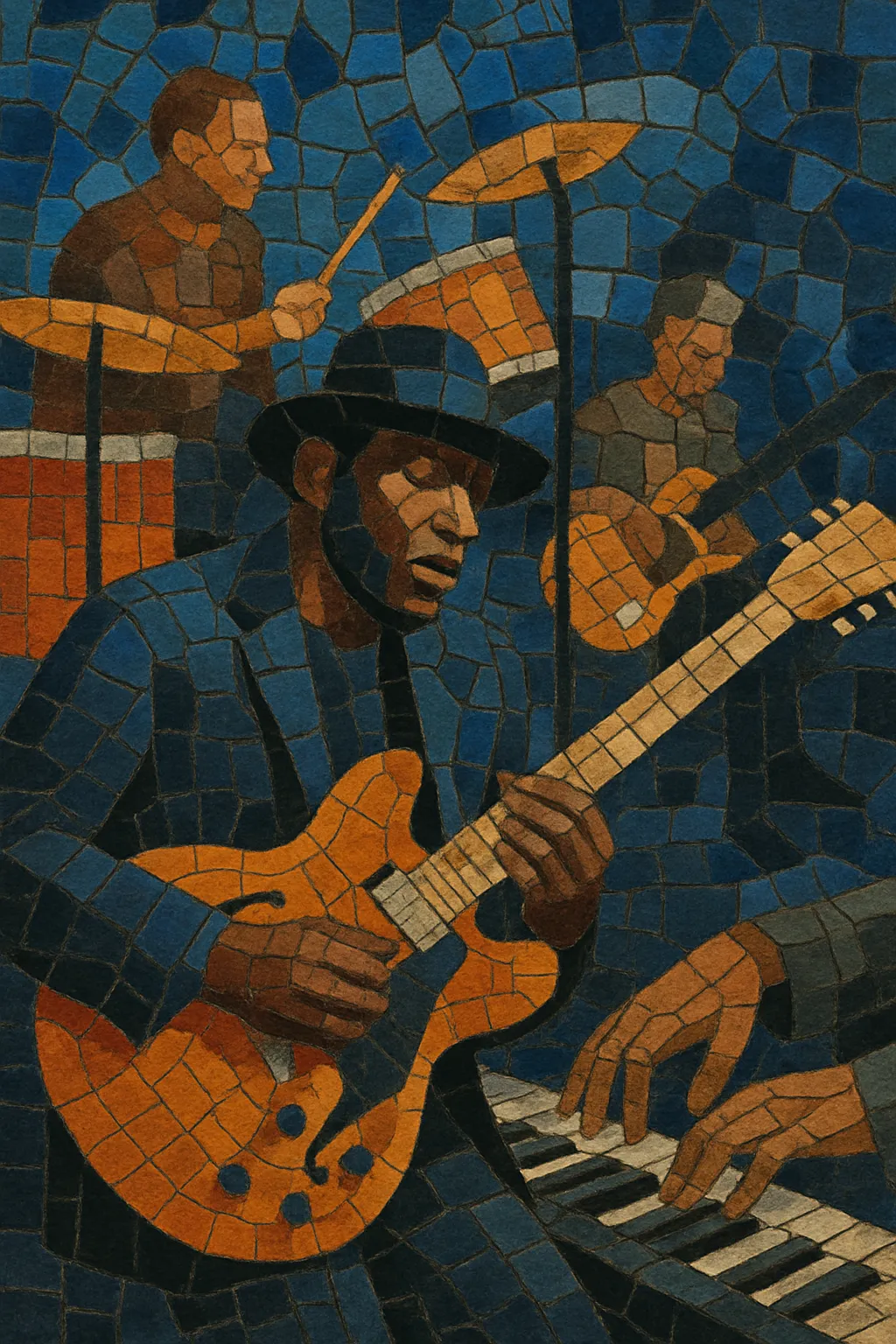
Modern blues is a contemporary evolution of traditional and electric blues that embraces current songwriting, studio techniques, and cross-genre collaboration. It preserves the core blues vocabulary—blue notes, call-and-response phrasing, and 12‑bar and minor‑blues forms—while integrating elements of rock, soul, funk, and even pop and hip hop production.
Sonically, modern blues favors saturated but articulate electric guitar tones, prominent backbeat drums, thick bass, and tasteful keys or organ. Lyrically it updates classic themes of struggle, love, resilience, and place with present-day imagery and personal storytelling. The result is a style that feels rooted and authentic yet radio- and festival-ready.
Modern blues emerged as artists sought to revitalize postwar electric and Chicago blues with bigger stages, contemporary recording, and rock energy. The 1980s saw a visible revival led by guitar-focused performers and a renewed industry interest in roots music. This period brought modern production sheen—gated reverbs, punchier drums, and high‑gain yet controlled guitar tones—while retaining classic blues forms.
In the 1990s, independent labels and producers reframed regional traditions for new audiences. Mississippi hill country artists were recorded with stripped-down, hypnotic grooves and occasionally remixed or paired with modern beats, bringing trance-like blues patterns into alternative and indie circles. Touring circuits and festivals expanded, and the blues club ecosystem supported a wave of new voices.
The 2000s and 2010s delivered crossover success: radio-friendly singles, arena tours, and collaborations with rock, soul, and Americana acts. Guitar-hero virtuosity coexisted with garage-blues minimalism, while contemporary songwriting emphasized hooks, dynamics, and polished arrangements. Streaming platforms helped globalize the scene, enabling both traditionalists and experimenters to find sizable audiences.
Today, modern blues spans gritty trio formats, horn‑backed soul‑blues, and genre‑bending projects that flirt with pop or hip hop textures. It remains anchored in deep groove and expressive guitar and vocal work, serving as a living bridge between century-old idioms and present-day production aesthetics.

